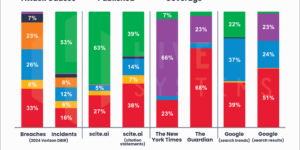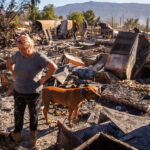Humans have been the culprits behind hundreds of thousands of wildfires in recent decades, and they will probably make things a whole lot worse in coming years.
Research from the University of Colorado Boulder finds that humans have dramatically increased the “spatial and seasonal extent of wildfires across the U.S.,” igniting more than 840,000 blazes in the spring, fall and winter seasons over a 21-year period.
The researchers used a U.S. Forest Service Fire Program database to study records of all wildfires that required a response from a state or federal agency between 1992 and 2012.
Human-ignited wildfires accounted for 84 percent of 1.5 million total wildfires studied, with lightning-ignited fires accounting for the rest. Lightning-driven fires tend to be heavily concentrated in the summer months, but human-ignited fires are more evenly distributed across all seasons, the research shows.
The research omitted intentionally set prescribed burns and managed agricultural fires.
Humans added an average of 40,000 wildfires during the spring, fall and winter seasons annually, or more than 35 times the number of lightning-started fires in those seasons, according to the research.
Part of the problem is growing populations in the wildland-urban interface, said Jennifer Balch, lead author of the study and an assistant professor in the university’s geography department.
Balch noted that 9 percent of the populated U.S. land area is currently in the WUI.
“That’s projected to double by 2030,” she said. “We’re going to have more and more people providing ignition sources.”
The annual cost of fighting wildfires in the U.S. exceeded $2 billion in recent years, and a fact that undeniably puts the finger on people for the growing costs of fighting all these fires is the high number of human-caused fires in populated areas, Balch said.
“We do know looking at the distribution that essentially you’ve got very populated areas of the East and the very populated areas along the West Coast that has a dominance of human-started fires,” she said.
In places like California, a drought-fueled tinderbox until the state’s current wet and wild winter, nearly all fires were caused by humans, the research shows.
“In the Mediterranean California ecosystems – west of the Sierras and including central and southern California – 97 percent of all fires are started by people,” Balch said. “That system is highly dominated by what people are doing.”
Just how much a changing climate is contributing to an increase in wildfires is the next thing the researchers plan to study.
“Now that we have this map of when and where people have started most of the fires, we can look at overlaying on top of that map where we’ve got issues with current climate change drying out fuels and where they are projected to be drying out in the future,” Balch said.
She said to expect the study looking at climate change and wildfires later this year or next year.
“One of the things that is really important to look at next is what’s the interaction between people and climate,” she said. “We know on a global scale that the fire season is about two weeks longer. And we know that people are adding ignitions about three additional months a year.”
Tom Jeffery, a senior hazard scientist at Irvine, Calif.-based data provider CoreLogic, was well aware that humans are starting more and more wildfires, but the magnitude revealed by researchers was an eye-opener even for him.
“It certainly takes you back to see the numbers on a page,” he said. “I never realized that those numbers were so high.”
Jeffery said there are so many ways humans can cause wildfires – he’s counted more than 100 ways – so the research helps quantify those difficult-to-pin-down wildfire risks. He believes the new research is something scientists can add to their own data sets to improve wildfire analysis.
“It’s very hard to determine natural vs. human and then accidental vs. intentional,” he said. “Right now it’s something that has piqued my interest to go and see what else I can find.”
As few as 40 years ago, lightning was the biggest cause of wildfires, Jeffery said.
“We’re seeing an increase in the number of homes that are damaged in human-caused fires,” he said.
A positive takeaway is that unlike lightning-caused fires, something can be done about human-caused wildfires, he added.
“If there’s one thing that we have some control over, it’s trying to reduce the ignition of human-caused fires,” he said, adding that homeowners and homebuilders can be encouraged to take wildfire mitigation steps.
Balch believes insurers can help in other ways, such as incentives similar to those for building or not building in flood zones.
“Similarly, I think that if we have fire zone maps or places that burn real frequently, we could help incentivize people to not build in those areas,” Balch said. “I’d love for the insurance industry to take this issue on and help incentivize where people are building because this problem is only going to get worse.”
This article originally ran in our sister publication Insurance Journal.




















 Moderating Premium Rates, Falling Yields: European Insurers Resilient
Moderating Premium Rates, Falling Yields: European Insurers Resilient  Insurance Carrier Employees Are Bored; Most Boring Rankings Published
Insurance Carrier Employees Are Bored; Most Boring Rankings Published  Weak La Nina Expected in the Central Region of the U.S. This Winter: NWS
Weak La Nina Expected in the Central Region of the U.S. This Winter: NWS  Wildfire Smoke’s Health Risks Linger Long After Homes Escape Burning
Wildfire Smoke’s Health Risks Linger Long After Homes Escape Burning 





